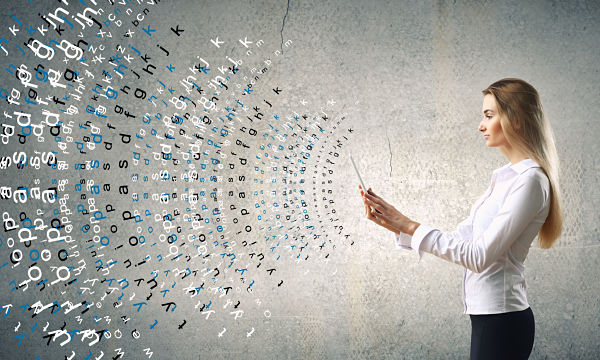Getting clients to read your communication rather than just look

Let's face it, it's bad enough getting your marketing material in front of your prospective client but there's another huge leap between that prospective client seeing your material and them actually reading it.
So how do you make the most of them initially scanning your leaflet, e-mail or blog post? How do you enhance their primary perception of what you are offering?
Pause for thought
Brain research has revealed fascinating evidence supporting our modern belief that a reader's brain gives emphasis to those words which are positioned towards the ends of sentences, paragraphs and sections. This is extremely significant when you're trying to trigger reader reaction.
The reason this is believed to happen is because the reader's eye-brain system has extra time to process the last few words as it scans the full stop and the following space before the capitalised letter of the next sentence.
You might not think that so little white space would provide enough time to be helpful but thoughts “move” at 200 mph so the brain can make very effective use of fractions of a second.
This is the reason the following should be changed from:
“Later on we provide assistance to the entrepreneur himself in the selection and training of a management team that builds on his or her strengths and complements weaknesses”
to
“Later on we provide assistance to the entrepreneur himself in the selection and training of a management team that compensates for his or her weaknesses and builds inherent strengths
The sentence now benefits from moving the thought about strengths to that emphatic end position.
Taking on the scan readers!
Nearly 10 years ago I read some research which showed that we're increasingly scan reading to a point where our neural transmitters are actually re-wiring so that we can't read large chunks of text. (In fact when I got to then end of the article I realised I had scan read the article – oh the irony!)
So we know that the brain doesn't want to wade into a page full of type, because it anticipates that it’s in for some rough sledding where long periods of concentration will be required.
What the brain does delight in is coming into a page that’s light and airy. That combination of attractively designed blocks of type, white space and illustrated space makes for an irresistible combination.
Given that, expert advice is that at least half of the surface area of each page should have white space – this is true for a letter, card, e-mail, digital newsletter, blog post, invitation and so forth.
White space between paragraphs also allows for thinking time as well as relieving long chunks of words - and this is the reason for putting in paragraph headings or short sharp stand alone sentences.
However, avoid placing paragraph headings immediately adjacent in two adjoining columns on your brochure or newsletter.
Things to consider about margins
- If the margins are wide each line of text will be short which helps with increasingly short attention spans.
- If you justify your margins the information is perceived to be knowledgeable and authoritative.
- If you want a more relaxed approach a left hand justified margin provides the ragged right hand side which makes your message appear more reader friendly and easier to read than a piece where both margins are justified.
The viewing cone
Research has discovered another crucially important fact. Whether they are looking at a piece of paper or a screen, people have a “viewing cone”. This is the area which a person sees on the page without actually moving their eyes.
Imagine the point of a cone touching upon a word in a paragraph where the prospective customer’s eyes are focused. Peripheral vision then allows them to see surrounding words at the same time but in order to actually read those other words they must move their eyes.
The more a prospective customer is forced to change their viewing cone – to move their eyes along a line of type – the more likely they are to stop reading.
To encourage their eyes to move, therefore, relies on creating some visual curiosity. This can be achieved by using a a dash or three dots...
Similarly quotation marks, italics, bold face, underlining and so on all create the perception of visual variety which keeps people reading your written communication.
However, less is more. Unless using italics to indicate direct quotes (for example) don’t italicise more than about three consecutive words in a sentence – this results in tiring the eyes. This also applies to excessive underlining and writing in capitals.
Overall, keep layouts simple, and don't distract your reader by using things like coloured bars across a written piece; fancy fonts or lines that draw your eye away from the main message.
I hope you found this helpful ( *)>
